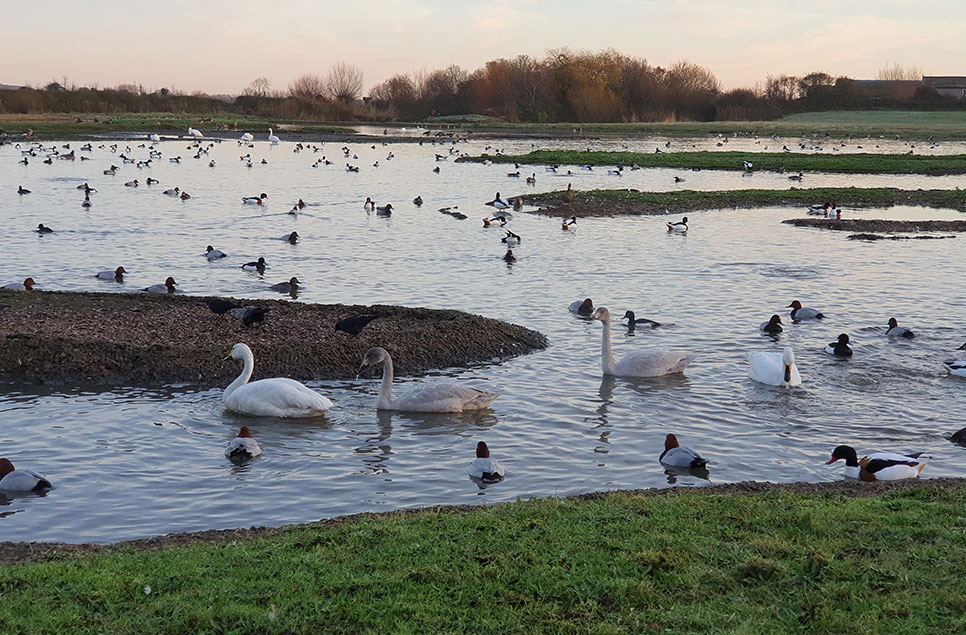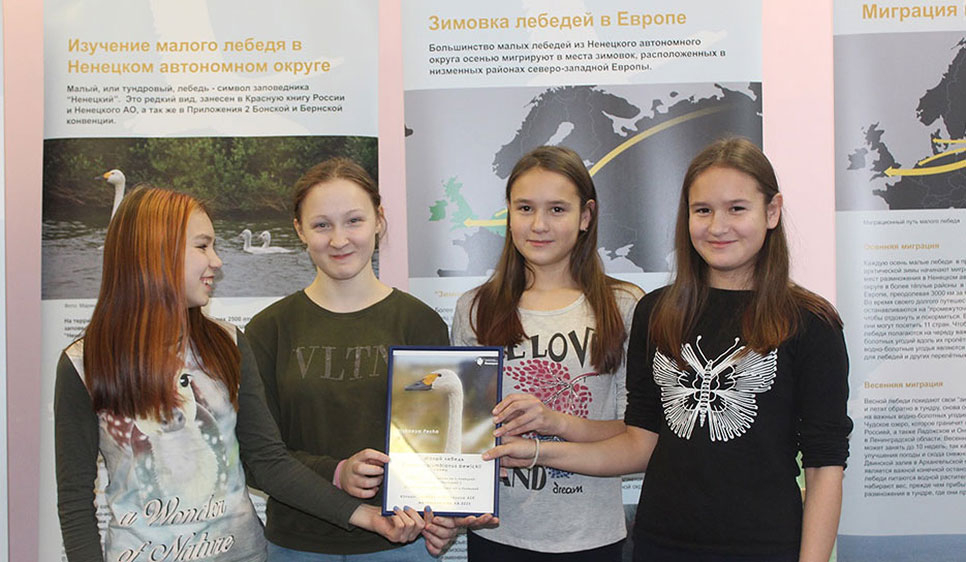Au revoir!
Our last two Bewick’s swans at Slimbridge have now embarked on their journey back to arctic Russia drawing to a close what has been a rather memorable swan season.
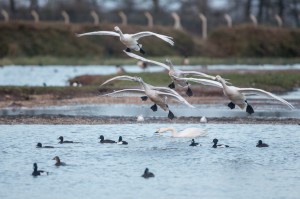
Following the arrival of the first seven swans at Slimbridge on 27 October we encountered some extraordinary weather in a winter marked by unusually mild temperatures and blustery south-westerly winds.
Despite the odd spell of north-easterly winds that brought flurries of new arrivals to our shores, the swans were slow to arrive at wintering sites in the Netherlands and Britain. Many swans ‘short-stopped’ and remained in countries further east contributing to the lowest number of swans recorded at Slimbridge since the 1965/66 winter! A total of 202 individuals, each recognised by its unique bill pattern or as a cygnet associating with its parents, visited the reserve over the course of the winter compared to an average of 352 recorded over the last five years. Numbers at WWT Welney and on the Ouse Washes in Norfolk never rose above 1,073 (recorded on 6 January). This area is the most important wintering site for the species and can expect to host up to 5,000 Bewick’s in mid-winter. The Netherlands encountered a similar scenario with around 5,000 birds recorded in mid-January which is quite incredible given that this country may hosts up to 13,000 swans every winter, a staggering 70% of the total Northwest European population. Although there were slightly higher numbers that usual in Belgium (around 500 birds) and in Denmark (up to 2,000 Bewick’s were drawn to stubble fields), this did not account for the remainder. So where were the rest of the Bewick’s swans this winter?!
It transpired that at least 5,000 had made the most of German hospitality! Germany has been an important staging area for the Bewick’s swans since the 1950s with thousands stopping at sites, mainly in the Baltic region in the northeast, on autumn and spring migrations. In recent years, it has not been uncommon to see between 2,000-4,000 swans wintering in Germany but this year was quite exceptional. Some did not even make it to Germany with 300 swans remaining in Poland! So all in all, an unusual winter for the Bewick’s in Europe...
Back at Slimbridge, a steady stream of loyal swans arrived slowly but surely and it wasn’t long before we welcomed back some familiar faces.
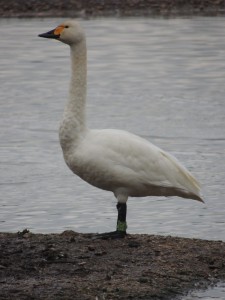
We were pleased to see Zara, named after Olympian Zara Phillips, bring back her first mate who we promptly named Tindall!
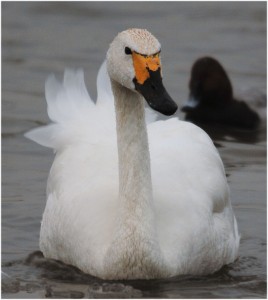
One of our most loyal swans Croupier flew in with his mate Dealer and their two cygnets for his 23rd winter at Slimbridge! Croupier first learnt the way to the reserve as a cygnet in 1991 after following parents Casino and Punter and is part of the famous ‘Gambling Dynasty’ that can be traced back to the 1960s! By the end of the winter there were individuals from four generations of this family on the lake (Wagers, Croupie, Pidro and Croupier), demonstrating the great site fidelity that is so characteristic of this species. It looks as though the Gamblers will be returning for many more years to come.
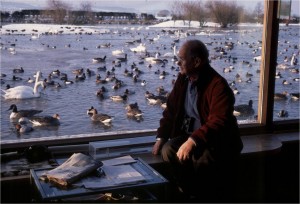
In February we reached a landmark in the history of animal studies as WWT celebrated 50 years of Bewick’s swan research making it one of the longest studies on any species in the world today. Since Sir Peter Scott initiated the project in 1963, it has grown from humble site-based observations to an international population study in a collaboration that continues to this day involving many researchers and conservationists along the flyway. Much information has been gathered on the swans’ social behaviour, their population dynamics (including variation in their breeding success and survival rates) and factors affecting their choice of wintering sites.
The study has seen an increase in population size up to the mid-1990s after which numbers have rapidly declined. Concern for the species led to the development of the Bewick’s swan action plan which aims to halt the decline. This was adopted by the African-Eurasian Waterbird Agreement in 2012 and WWT has recently been named as official coordinators of its implementation.
We have heard that the swans are making good progress with ringed birds being spotted on migration in the Baltic states. We will keep you posted on their epic journey which will take them 2,500 miles of flying over up to 8 countries before finally arriving at arctic Russian breeding sites in late May.....
We would like to thank all swan spotters from Ireland to Russia for sending us news about the Bewick's swans this winter!
